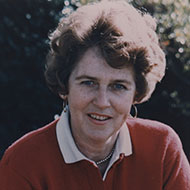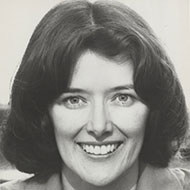
Before the age of the ballpoint pen, Americans wrote their documents with fountain pens dipped in ink. Blotters soaked up the excess ink, and were a popular campaign object for decades, from their invention in the late 19th century until ballpoint pens hit the market after World War II, shoving fountain pens off the desktop by 1960.

Before air conditioning, portable, collapsible, and durable handheld fans were a necessity in the hot months. For congressional candidates, summertime made fans the perfect giveaway at parades, rallies, and “any kind of places where people congregate regularly in hot weather,” as one proponent noted. The House Collection contains breezemakers from a century’s worth of sweltering campaigns.

About 30 years after the 19th Amendment was ratified in 1920, political campaigns increasingly targeted women for votes. Political appeals to women were by no means a new idea. However, women’s relatively recent victory in winning the right to vote, coupled with postwar sexism, added modern twists to old traditions of looking for women’s political support.

The modern congressional campaign poster is a familiar sight, but it is nothing like the ones plastered all over town a century ago.

It started simply enough, a hundred years ago. Americans bought cars. Americans loved cars. And Americans loved politics. So, it seemed almost inevitable that automobiles became rolling billboards for their owners’ favorite candidates. Representatives cheerfully provided different auto accessories, which became a favorite method for taking the campaign on the road.

If your signature look is a black bow tie, and if you are a candidate for Congress, do you want your campaign buttons to look like bow ties? Of course!

Each election cycle, campaign buttons bloom on voters’ lapels like flowers in spring. These bright badges come in all shapes, sizes, and colors, and boast catchy slogans such as “We Love Lindy.” Campaign buttons made their debut on the trail in the late 1890s with the advent of a new material called celluloid.

Not so long ago, match companies touted “the smashing advertising power of book matches!” as the best way to light a fire under voters. Budget-conscious candidates agreed. Low cost and wide use turned a set of strikes into “20 little salesmen” for congressional candidates.

Ribbons that declared "The Winner." Ribbons for the "Peter J. Dooling Association." Ribbons mourning a dead Speaker of the House. Once, they were all the rage. Then, in the 1890s, a single innovation changed everything. Political ribbons went from reigning supreme as the most portable, wearable, and popular campaign decoration to being a deposed monarch of politicking, exiled to conventions and party dinners. What happened?

The Honorable Beverly Barton Butcher Byron discusses the materials she used in her congressional campaigns, including a promotional pamphlet with Byron family recipes. The “Dine with the Byrons” campaign tradition started when her husband, Goodloe Byron, ran for the Maryland state house in the 1960s.

The Honorable Constance A. Morella describes the personal element of her campaign buttons.

When it came to campaign buttons, Congresswoman Schneider wanted the emphasis on her first name. After her unsuccessful bid for Congress, voters of the district sported “Next Time, Claudine” bumper stickers. For her second campaign, she used a slogan that already had a ring to it.

The Honorable Patricia Scott Schroeder describes her campaign flyers for the 1972 congressional campaign.
Next Section